
D I C K I N S O N

Sir Francis Grant, P.R.A., Self-portrait, 1845, oil on canvas, 75.9 x 63.1 cm., National Portrait Gallery, London
Sir Francis Grant, P.R.A. (1803 – 1878) was a home-grown artistic talent; Queen Victoria herself once claimed that ‘he boasts of never having been to Italy or studied the old masters’. Her observations appear to have been accurate in so far as Grant was not the product of a vigorous artistic education at the Royal Academy, nor did he unduly concern himself with studying the antique or championing ambitious history painting. Parochial as they may have seemed, Grant’s artistic attitudes were by and large those of the major aristocratic and royal art patrons of mid-19th-century Britain. It therefore follows that by painting their portraits – it made no difference if his subjects were seated on a throne or a thoroughbred hunter – Grant’s ascent to the very top of his profession was assured.
Unlike many artists, Grant was no maverick outsider. The son of a Scottish laird, he was educated at Harrow and grew up at Kilgraston House, near Perth, an impressive seat hung with old master paintings and family portraits. Despite being a younger son, and therefore expected to find a profession, Grant still received a considerable inheritance of £10,000 on his father’s death in 1818. On reaching his majority, and with new liquidity, Grant set his sights south on the fabled hunting country around the town of Melton Mowbray in Leicestershire, a place that would become his lifelong home, shaping not only his career, but his social life too.
Sir Walter Scott, an early mentor to Grant, wrote that ‘he was passionately fond of fox hunting and other sports […] he used to avow his intention to spend his patrimony, about £10,000’. By 1827 Grant had been married and become a widower and, true to his word, he had spent his entire inheritance on buying paintings and keeping up appearances among the hunting fraternity at Melton Mowbray, its number described by ‘Nimrod’ as ‘the flower of English youth’ and, accordingly, as a conduit to the ‘best society in the world’.
Almost penniless, Grant returned to Scotland in 1827 and spent the next six years honing his skills as a professional painter. By 1833 he was back in England, living between Melton Mowbray and London. Crucially, he was by this time presiding over a growing professional practice, a practice that led Queen Victoria to comment snidely that although Grant ‘was a gentleman’, he ‘now paints for money’. In reality, Grant’s place in high society had been confirmed a few years earlier by his marriage in 1829 to Isabella Norman, a niece of Leicestershire’s premier nobleman, the 4th Duke of Rutland. Sir Walter Scott described the union: ‘the lady had not much wealth, but excellent connections in society, to which Grant’s good looks and good breeding made him very acceptable’.
As well as being a consummate sportsman, Grant was evidently a sociable and handsome man (a fact to which his 1845 self-portrait attests). He moved with ease between the hunting fields and aristocratic drawing rooms of the country and the artistic salons and academies in town. This dual existence is clearly reflected in the fact that Grant was not just a portrait painter, but an accomplished sporting artist too. Many of his earliest masterpieces were ambitious pictures of hunting subjects like his 1833 A Meet of the Buccleuch Hounds and 1835’s The Ascot Hunt, the latter painting containing dozens of mounted huntsmen and hounds artfully grouped in an extensive landscape.
His portraits are often broadly painted, yet sensitive, grand manner productions, very much descended from Van Dyck, Gainsborough and Reynolds. Of these, his portrait of his daughter, Mrs Markham (1857), now in the National Gallery of Scotland, is probably the greatest example. When he could, Grant would introduce sporting elements into his portrait commissions. Perhaps the most successful of these are two of his portraits of Queen Victoria: Queen Victoria Riding Out (1840) and Queen Victoria on Horseback (1845), both of which are in the Royal Collection.
Grant’s career reached its apogee when, in 1866, he was both knighted by the Queen and elected President of the Royal Academy after his great friend, Sir Edwin Landseer, set aside his own ambitions for the position. By now known by his peers as ‘the fox-hunter’, Grant took a personal approach to the Presidency that was not one of rarefied theory or cool classicism; according to the painter Richard Redgrave, ‘what it [the Royal Academy] lost in calm impressiveness, it gained in geniality’. Grant’s great and lasting achievement as President was undoubtedly his skilful management of the Academy’s relocation from its cramped quarters at the National Gallery to the newly remodelled Burlington House, where it remains today.
Grant died in 1878 at Melton Mowbray. The Royal Academy’s offer of a burial at St. Paul’s Cathedral was refused in favour of a funeral at Melton Mowbray. The Academicians arrived by train from St. Pancras to a town whose shops had closed for the day out of respect for their esteemed neighbour.
The group of drawings exhibited here is the largest assembly of Grant’s work today. They have descended in his family and have never been publicly exhibited, much less offered for sale. The drawings, which represent his entire career both chronologically and thematically, are organised into four groups. The first and largest is entitled ‘High Society’ and is made up of sketches of Grant’s family and friends. Sensitive drawings of his beloved wife and daughters unsurprisingly appear with most frequency and the artist’s sympathy for these subjects radiates from each sheet. An extensive collection of sporting, animal and landscape drawings follows with highlights including a group of chalk studies of hounds made in preparation for Grant’s painting The Kill, the Earl of Bradford, with the Belvoir Hounds. The third section demonstrates Grant’s working methods as a portraitist with numerous compositional sketches and detailed chalk studies. A small group of miscellaneous works concludes the exhibition. This catalogue lists the unframed works in the show, which are being exhibited alongside a group of over 100 framed works, all of which are published in a separate catalogue.
A distinct picture of both Grant the man and the artist emerges through the study of these drawings. First, he was unarguably a dedicated family man, much devoted to his wife and children. Second, his exploits in the field were of paramount importance to him both socially and artistically. His easy manner and extensive connections are as plain to see in his drawings as they are in the many written records that
confirm these facts. As a professional artist he was clearly meticulous in his preparation, as evidenced by the myriad portrait and sporting studies included in this show.
The final, and most important impression is that Grant was no hack. Grant’s artistic bent did not evaporate when he closed his studio door. Instead, he carried it out into the world by compulsively drawing those around him with perception, sympathy and good humour. Grant’s world is, at a distance of nearly two centuries, reflected back to us in this remarkable collection of drawings which, when taken together, constitutes a complete insight into the life of the artist and the high society in which he lived.
William Bayliss
All the following artworks are sold in mounts but are unframed. Some artworks’ inscriptions are not included in the following illustrations. The dimensions listed refer to the size of the artwork, not the size of the mount.

I. High Society

The Honourable Mrs Butler.
The sitter is engaged in a kind of handwork, possibly a knotting shuttle. £300




123. Sir Francis Grant, P.R.A., The Earl of Wilton at the Corn Exchange, pen and ink on paper, 18 x 11.5 cm. Inscribed Earl of Wilton at Corn Exchange £200

124. Sir Francis Grant, P.R.A., John Ferneley, pen and ink on paper, 14.5 x 11 cm. Inscribed Mr J. Ferneley. Ferneley (1782 – 1860) was a successful and famous sporting artist and, like Grant, a resident of Melton Mowbray. He assisted Grant with his pictures of horses and Grant helped Ferneley with figure painting.
£200

125. Sir Francis Grant, P.R.A., Mrs Grant, pen, ink and wash on paper, 18 x 11.3 cm. Inscribed Mrs Grant. £300

126. Sir Francis Grant, P.R.A., A land-owner and gamekeeper with two poachers (‘It’s wery hard as we should be sent to jail for picking up that there dead hare-’), pen and ink on paper, 12 x 18.6 cm. £200

127. Sir Francis Grant, P.R.A., Portrait of a girl, pen and ink on paper, 18 x 11.5 cm. Indistinctly inscribed FGt 1861. £200

128. Sir Francis Grant, P R A , Studies of a huntsman in profile (with two more, verso), pen, ink and wash on paper, 17.8 x 22.9 cm. £200


9.8
£300


£100
£200


£200
£200


£300
£300

137. Sir Francis Grant, P.R.A., A gentleman, pen and ink on paper, 18 x 11.3 cm.

£100
138. Sir Francis Grant PRA, A gentleman in profile, pencil and black crayon on paper, 10.7 x 11.5 cm. Inscribed Grant / Fecit / aged 12. £100

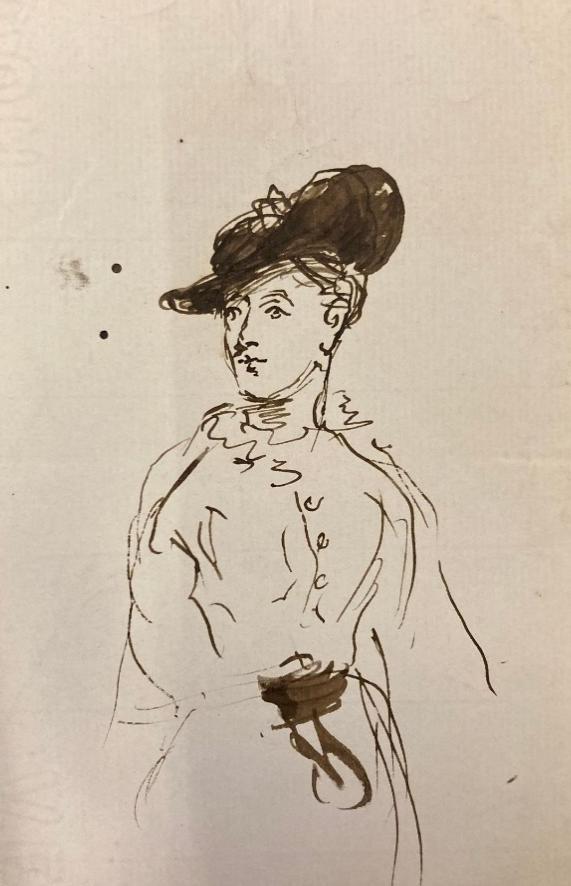
£100
£100
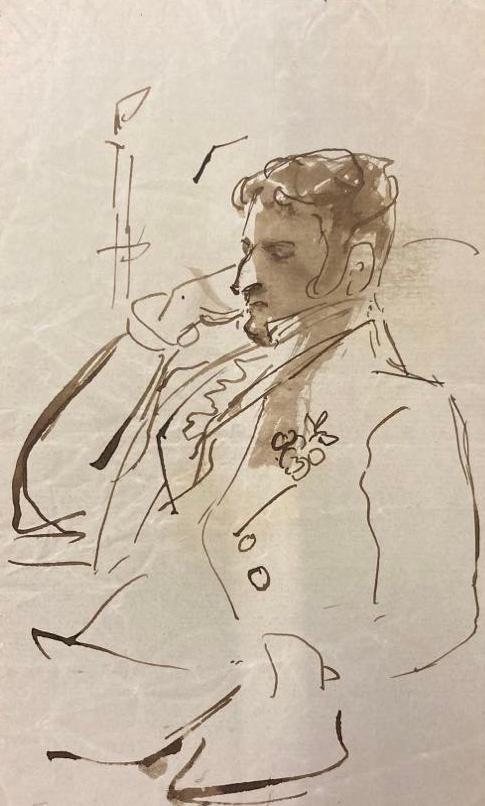



£200
This lady, presumably Grant’s wife, is breastfeeding her child. £300

145. Sir Francis Grant, P.R.A., A gentleman reading, pen and ink on paper, 23 x 18.5 cm.

£300

146. Unknown artist, Lady Elizabeth Isabella Norman (recto), Mary Isabella Dutchess of Rutland (verso), pencil, pen and ink on paper, 22.5 x 17.5 cm. Inscribed Lady Elizabeth Isabella Manners daughter of Mary Isabella Dfs of Rutland sister to John Harry Duke of Rutland Lord Lieutenant & C R of the Countess of Leicester (recto) and Lady Isabella Dfs of Rutland (verso).
Lady Elizabeth Isabella Norman (1776 – 1856) was the mother of Grant’s wife, Jane. Mary Isabella, 4th Dutchess of Rutland (1756 – 1831) was her grandmother. The paper is watermarked 1800, which seems a likely date for the drawings £300


£200
£300

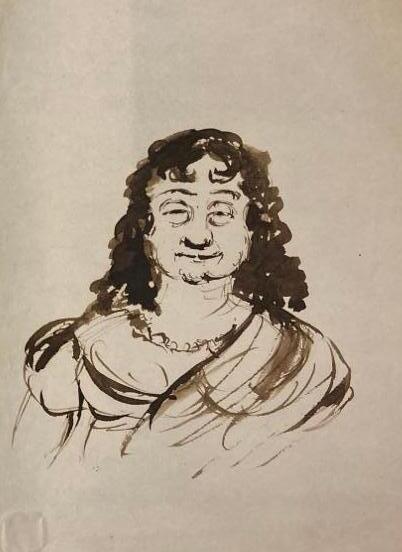
Same sitter as no.
£300
£200

Same sitter as no. 150. £200
FG. f


153. Sir Francis Grant, P.R.A., A lady, pen and ink on paper, 19.7 x 23.2 cm.

£200
154. Sir Francis Grant, P.R.A., Lady E. Norman stitching, pen, ink and wash on paper, 15.6 x 23.7 cm. Inscribed Lady E. Norman. Lady Elizabeth Norman (née Manners) (1776 – 1853), the artist’s mother-in-law. She was the daughter of Charles Manners, 4th Duke of Rutland. £200



157. Sir Francis Grant, P.R.A., Three ladies, pen and ink on paper, 18 x 11.3 cm.

£200
158. Sir Francis Grant, P.R.A., Reading the settlements, pen and ink on paper, 18.5 x 19.6 cm. Inscribed Reading the settlements. £200


£200
This is most likely Rachael Walpole (1824 – 1854), wife of John Savile (1810 – 1899), Viscount Pollington and later 4th Earl of Mexborough. £200



163. Sir Francis Grant, P.R.A., Mrs Grant, pen and ink on paper, 13.8 x 11.3 cm. Inscribed Mrs Grant. The artist’s wife.
£300

£100



167. Sir Francis Grant, P.R.A., Mrs Grant (1829), pen and ink on paper, 23 x 19 cm. Inscribed Mrs. Grant in 1829.
The artist’s wife.

£300
168. Sir Francis Grant, P.R.A., The Honourable Mrs Forester, pen and ink on paper, 16.1 x 11.7 cm.
Inscribed The Honourable Mrs Forester
Mary Jervis (1812 – 1893), later Lady Forester, daughter of Edward Jervis 2nd Viscount St Vincent, who married George Weld-Forester in 1862. She is shown embroidering or engaged in another kind of handwork Grant painted her sister-in-law, the Hon. Selina Weld-Forester, Countess of Bradford, a work which hangs at Weston Park.
£300

Mrs Grant The

£300


£300
£200

173. Sir Francis Grant, P.R.A., A lady playing the piano, pen and ink on paper, 22.1 x 19.2 cm. Inscribed Frauline [sic] Heysen
£300

174.
11.3 cm. Inscribed Mrs
£200

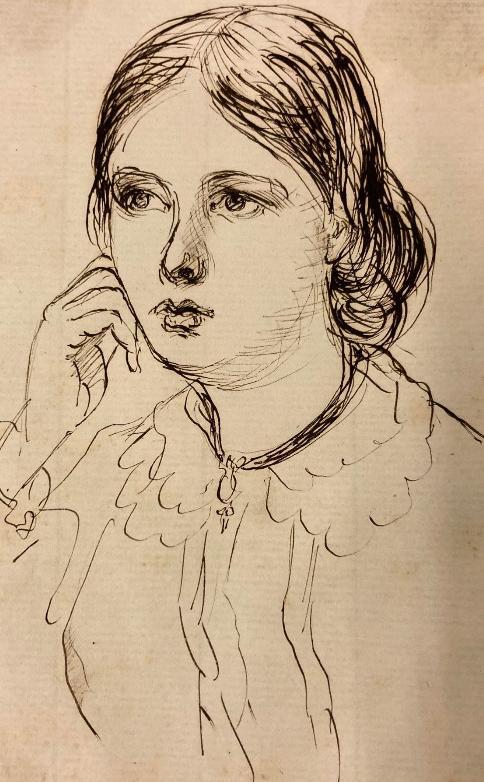
Anne
SOLD



The artist’s wife.

£50
£300

181. Sir Francis Grant, P.R.A., Mr Wardrope, pen, ink and wash on paper, 22.4 x 18.3 cm. Inscribed Mr Wardrope / “Jemmy
James Wardrop (1782 – 1869) was a distinguished eye surgeon

£300
£100

183. Sir Francis Grant, P.R.A., A seated lady, pen and ink on paper (embossed with The Lodge / Melton Mowbray), 17.2 x 11.1 cm. Indistinctly inscribed […] came to ask us all to dinner today - / […] attractive Lady / Sir F. Grant. £300

184. Sir Francis Grant, P.R.A., An officer, pen and ink on paper, 13.8 x 10.6 cm. Inscribed Sir F Grant. £200

185. Sir Francis Grant, P.R.A., A gentleman seen from behind, pen, ink and wash on paper, 10.3 x 8.5 cm. Inscribed Sir. F Grant. £200

186. Attr. Sir Francis Grant, P.R.A., Mrs Whyte, pen and ink on paper, 17.8 x 11.1 cm. Inscribed Mrs Whyte as she appeared in walking – Costume - (The bay is wet). £200


£100
£100

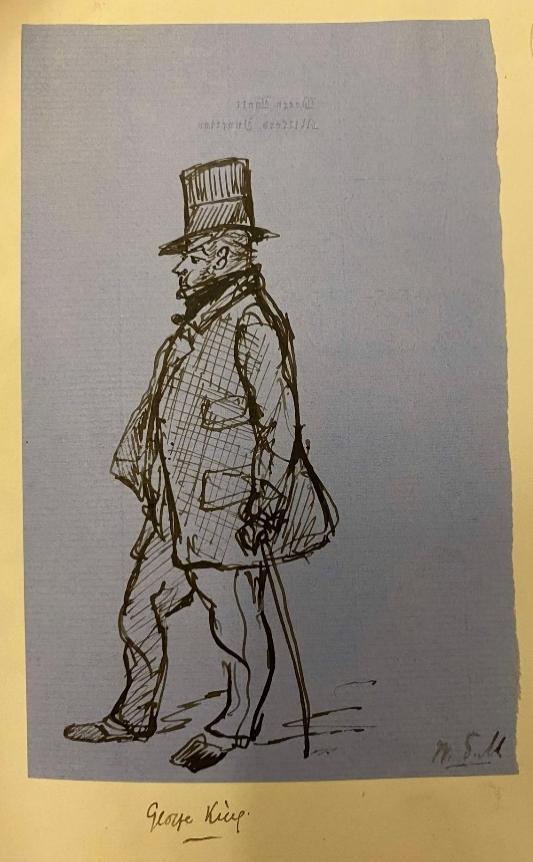
£200
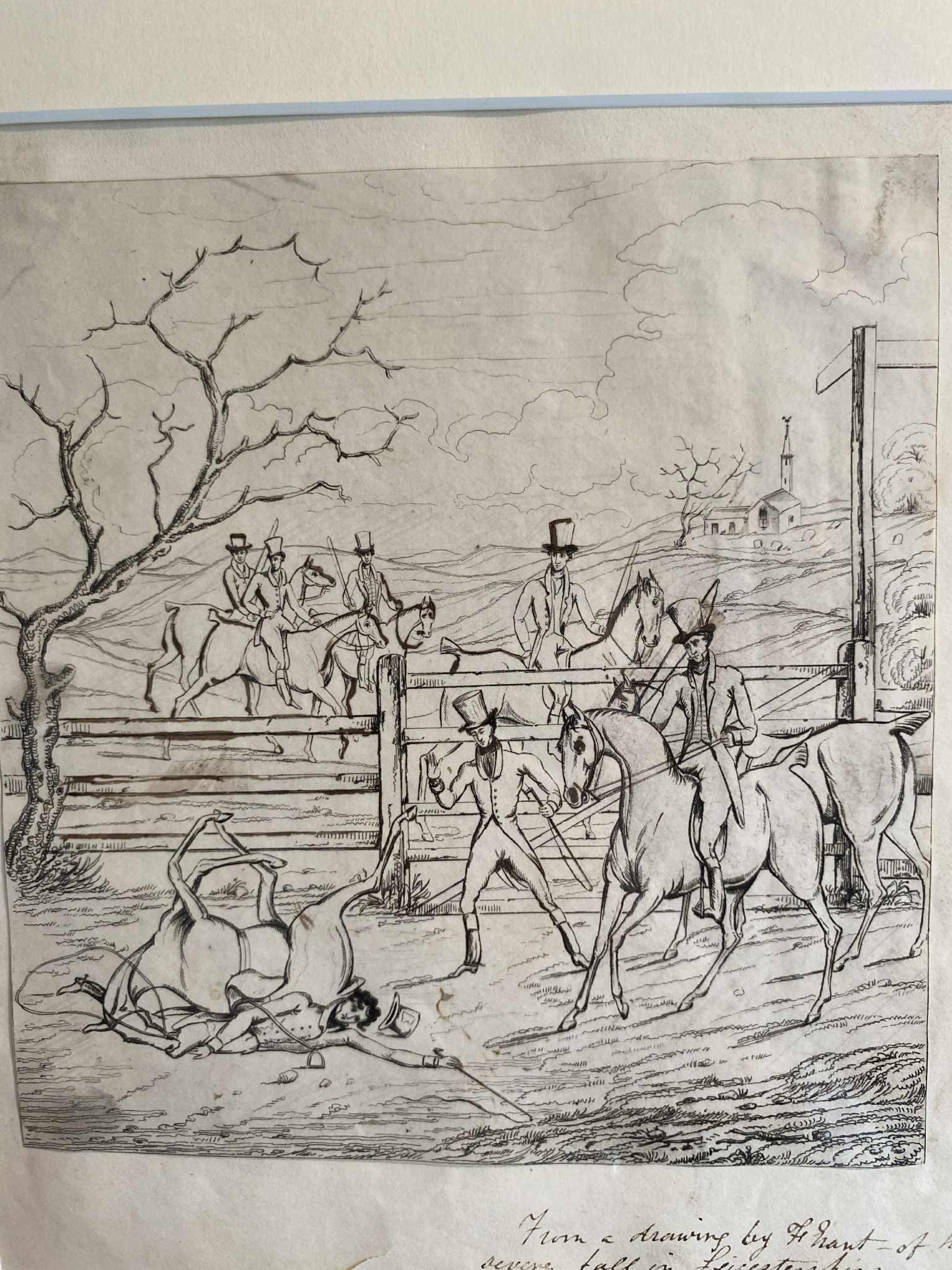
II. Sporting, Landscape and Military subjects

191. Sir Francis Grant, P.R.A., Evening of the Steeplechase, Melton Mowbray, 1864, pen and ink on paper, 11.5 x 18 cm. Inscribed Evening of the Steeplechase, Melton Mowbray – april 2 1864. £200

192. Sir Francis Grant, P.R.A., Plant study, 1842, pencil on paper, 11.5 x 18.3 cm. Inscribed Francis R C Grant September 19th 1842. £100


A copy by Grant of a drawing by Landseer (fig. 1)

£200
£100

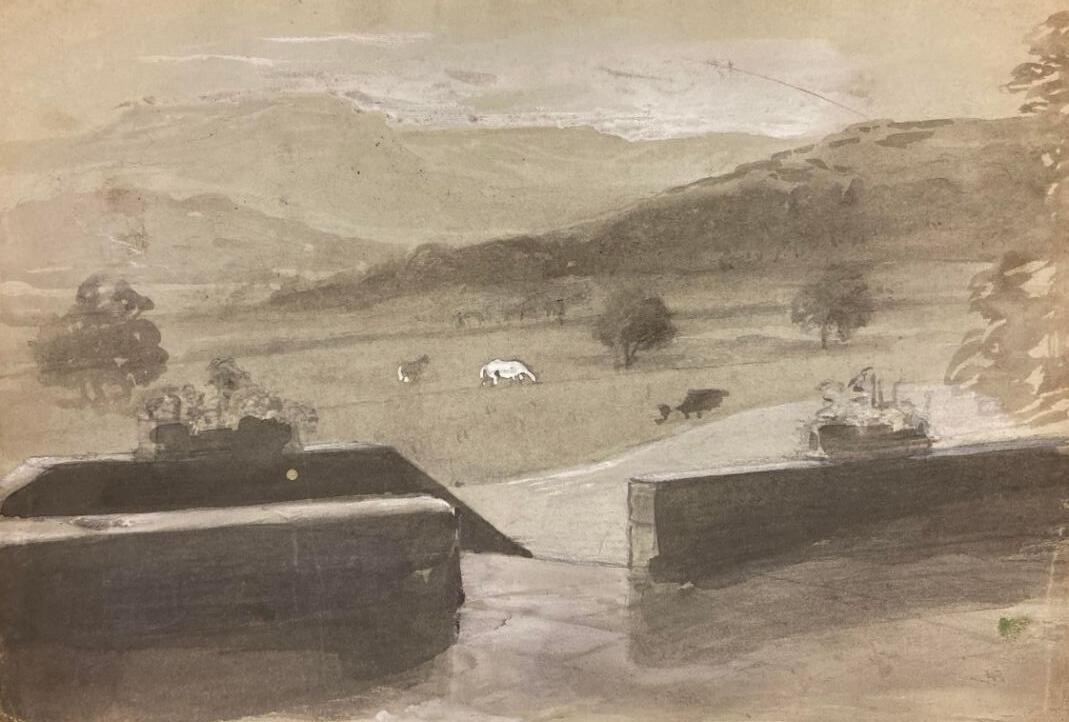
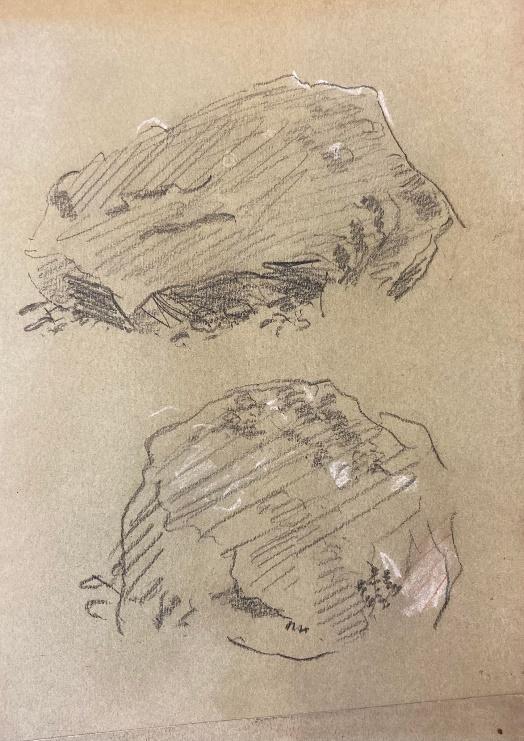

(verso)

£100
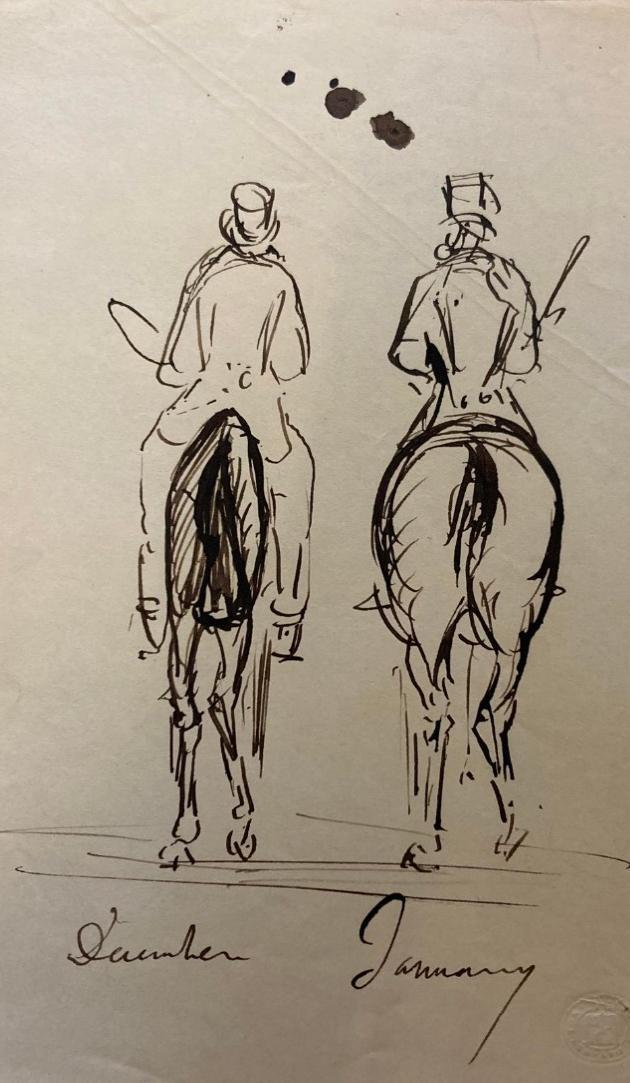
199. Sir Francis Grant, P.R.A., December, January, pen and ink on paper, 18.5 x 11.7 cm. Inscribed December January. £300

200. Sir Francis Grant, P.R.A., Study of hounds, graphite and coloured pencil on paper, 15.2 x 21.8 cm. £200

201. Sir Francis Grant, P.R.A., Melton Mowbray Church, pen and ink on paper, 13.6 x 9.7cm. Inscribed Melton Church
This church tower appears in Grant’s portrait of his mother-in-law, Lady Elizabeth Norman. £100

202. Sir Francis Grant, P.R.A., Sketch for an equestrian picture, pencil on paper, 5.2 x 3.5 cm. £50

203. Sir Francis Grant, P.R.A., A carriage crash, 1855, pen and ink on paper, 11 x 17.7 cm. Inscribed June 1855 £100

204. Sir Francis Grant, P.R.A., A man shooting, pencil on paper, 10.7 x 14.6 cm. Inscribed ditto loading. £100

205. Sir Francis Grant, P.R.A., Oh Fie!, pen and ink on paper, 13.3 x 8.8 cm. Inscribed OH FIE! / ¼ past 3 / John Leslie and indistinctly signed by two others. £200

206. Sir Francis Grant, P.R.A., A rearing horse, pen, ink, and wash on paper, 11.3 x 10.2 cm. Indistinctly inscribed Sir F Grant. £200
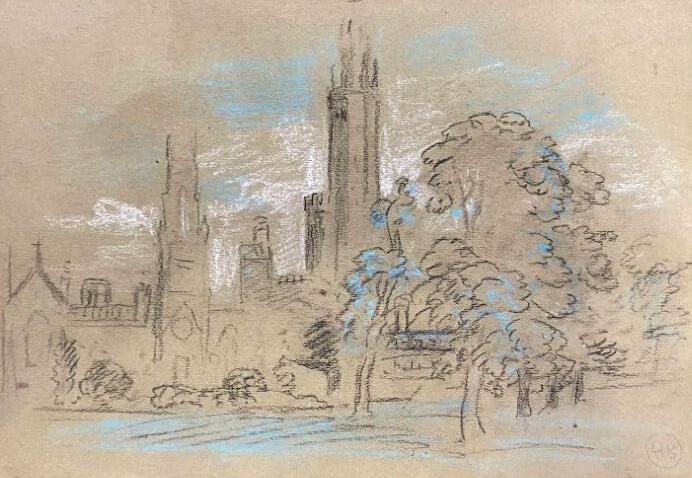

(verso)
£300

208. Sir Francis Grant, P.R.A., Landscape with trees and a pheasant, chalk on blue paper, 18 x 26 cm. £100
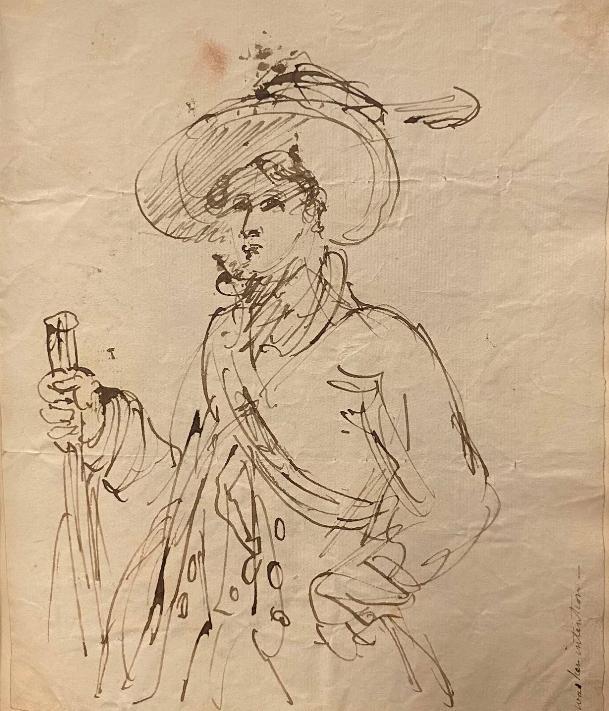
209. Sir Francis Grant, P.R.A. , A sportsman with a gun, pen and ink on paper, 22.2 x 18.7 cm. Inscribed This and all the following drawings were collected by Emily Grant with the intention of pasting them in this book which she kept on purpose for her husband’s drawings – who after her death pasted them in – as was her intention.
£300

210. After Sir Francis Grant, P.R.A., A fall in Leicestershire, engraving, 18 x 17 cm. Inscribed From a drawing by F Grant – of his severe fall in Leicestershire – Pasted in by Emily Grant.
This print is mentioned by Catherine Wills in her 2003 National Gallery of Scotland exhibition catalogue: ‘A less successful incident is recorded in an engraving after a drawing by Grant which shows him in hunting clothes lying on the landing side of a large obstacle with a horse spreadeagled above him.’ C. Wills, High Society, The Life and Art of Sir Francis Grant 1803 – 1878, exh. cat., National Gallery of Scotland, Edinburgh, 2003, p. 18. £300

211. Sir Francis Grant, P.R.A., Death of a cavalryman, 1826, pen and ink on paper, 22.7 x 18.7 cm. Inscribed FGt . £300

212. Sir Francis Grant, P.R.A., Stella, pen, ink, and pencil on paper, 9.3 x 13.8 cm. Inscribed “Stella”. / Feb /59 / F. Grant. £100

SOLD


215. ?William Gill, Member of the Badsworth Hunt, pen, ink and wash on paper, 18.4 x 22.1 cm. Inscribed Member of the / “Badsworth Hunt / W. Gill £300

216. William Gill (?), A Huntsman from behind, pen and ink on paper, 14.2 x 10.2 cm. Inscribed W. Gill. £200













































